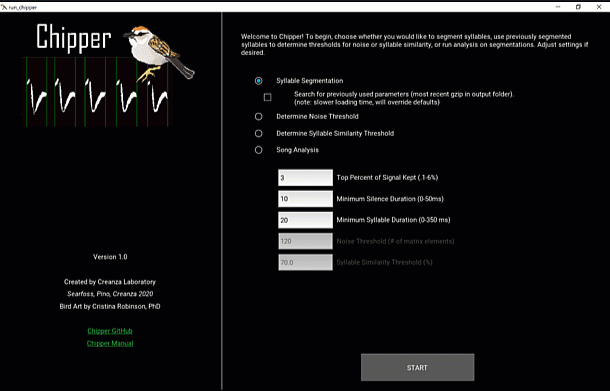Amateur birders and citizen scientists will soon have a novel way to contribute to groundbreaking research.
With a new app, created and shared by the team at the Creanza Laboratory at Vanderbilt, researchers can better leverage crowdsourced fieldwork and audio recordings from bird enthusiasts to accelerate the progress of research on naturally occurring songbird behaviors.
Coined Chipper for its ability to ‘chip’ songs into easily measured syllables and notes, the app uses code developed by Vanderbilt graduate student Abigail Searfoss to analyze audio collected using a variety of different personal recording devices.
The methodology and app are detailed in a new study, published recently in the journal Methods in Ecology and Evolution.
“As hobbyists and citizen scientists become actively engaged in fieldwork and contribute findings online, researchers like us are increasingly looking to leverage those efforts of the general public,” said Searfoss.
Designed with a clean user interface, the app allows users to load in audio recordings of birdsongs and easily visualize, segment and measure each recording by manually adjusting slider buttons to change the amount of audible signal in each recording. Once adjusted, the app automatically updates the segmentation of the birdsong — highlighting each individual syllable, note and period of silence for subsequent measurements and comparisons against other recordings.

Nicole Creanza, director of the laboratory and assistant professor of biological sciences, notes that the tool was also named for its role in a larger project studying the long-range geographical patterns of the chipping sparrow, published in the journal Animal Behaviour.
In that study, the researchers were able to upload crowdsourced audio data, from databases such as Macaulay Library, into Chipper to analyze 820 field-based audio recordings of the simple chipping sparrow song. They found significant correlations between song features and geographical distance associated with longitude, as well as diverse song types across the species’ range.
The app enabled the team to find a first for chipping sparrows: Cultural differences in two genetically indistinguishable, yet geographically separate, groups of chipping sparrows.
“With a world of information at their fingertips, we wanted to provide a tool that would do some of the finer research legwork for the people contributing data,” said Creanza. “We hope other institutions and organizations will be able to use Chipper for their research projects in the future.”
For the chipping sparrow study, Searfoss was supported by the National Science Foundation Graduate Research Fellowship Program under Grant DGE-1445197, with additional support from Vanderbilt.